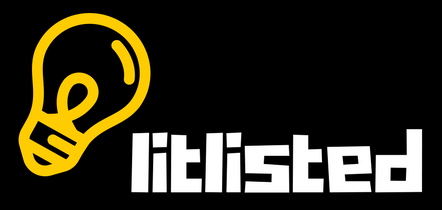Reach Your Goals with These 4 Budgeting Alternatives
 Source : CollegeInfoGeek
Source : CollegeInfoGeek
When setting up a road-map toward achieving your financial goals, the most common tool recommended by many financial experts is a budget. This is regardless of your end game-saving for retirement, buying a house or getting out of debt. Besides, financial experts say a budget is a key to financial stability and independence.
Since you’re positive about achieving your goals, you end up creating one. However, a few months down the line, you encounter emergencies such as a health complication, which requires immediate financial attention. This means veering from your budget to meet the costs. As a result, the budget becomes useless and you think to yourself, “I might as well throw it out the window altogether.”
Budgets aren’t the only way to meet your financial goals, though. There are various alternatives you can incorporate to reach your goals.
Jump to a Heading
1. Reward Yourself
This is one of the best alternatives to budgeting to meet your financial goals. Your first step is to decide your target savings each month. Afterwards set aside that amount, and you can spend whatever remains however you feel like. In short, save before you spend.
According to financial experts, this method allows you to save no matter what. According to their argument, saving before you spend allows you to spend some or all of the remaining amount without worry.
How to Achieve this
Decide your target amount: This amount will be a percentage of your income and will encompass all types of savings such as retirement, paying off debts by consolidating with nation 21 loans, and other goals like a deposit on a home or a vacation. Most financial experts recommend saving at least 20% of your total income
Settle on a savings account: Where will you put away your savings? This is your next task. A rule of thumb is to separate your savings account from the one you use for your daily expenses. This way, you won’t get tempted to dip into the savings once you’ve depleted the spending money. Most of the savings should go toward your retirement account. You can split the remainder between an investment account or a savings account.
Consider direct deposits: As the name suggests, a direct deposit is a money deducted from your paycheck that goes straight into your preferred account. For a workplace retirement account, pre-tax money can move directly from your paycheck to the account. For other accounts, the entire paycheck can move straight to a savings account and later on, you can deduct what you need for daily expenses.
2. Track Your Spending
Tracking your spending works in the same way a budget does. It involves tracking your income, investments, and expenses every month. This will allow you to see where every dollar goes and will also let you see what you might need to cut back on.
Nevertheless, this method doesn’t need you to set limits on spending each month. Rather, you’ll only watch how you spend your money and whether any adjustments are required. In the long run, this will restrict your spending on unnecessary items that may sidetrack your financial goals.
How to Achieve this
List everything: This includes your total income and expenses for every month. This will help you to track both by updating the records regularly. Use budgeting apps such as YNAB or “boot camp” approach to help you.
Classify your expenses: This you’ll do at the end of the month. List the expenses under broad categories such as health, entertainment, food, utilities, car, etc. Note that these categories will differ from one person to another. You can adjust your list to suit your spending habits.
Make calculations: Once you’ve separated income from expenses, it’s time to calculate as a percentage how much each expense draws from your income. For instance, if you earn $5,000 each month and pay $500 as rent, then under the rent category, you would indicate 10% of your income.
Set spending goals: Once you’ve calculated each expense, take the time to analyze each category with the aim of finding ways to cut back. If you find a certain category to be too high, set a goal to reduce the spending.
Track your spending behavior: It’s not enough to set a goal. You have to watch your spending habits over the following months, so you don’t veer from the set goal.
 Source : TLNT
Source : TLNT
3. The Double Account System
Paying yourself first may be a great way of meeting your financial goals. However, if you don’t watch your spending, chances are you may not have your money before getting to the end of the month. To work around this, it’s advisable to create two different accounts. One for your daily living expenses and the other for your savings. This separation allows for a buffer for when you deplete the money in the daily account.
How to Achieve this
Stash some money: Decide on the amount of money you wish to save each month and automatically deduct it from your paycheck. You can split the money into various accounts such as an investment account, savings account, or a 401(k).
Create two accounts: The next step is to create two accounts. One for the daily expenses and the other for savings. Thereafter, set up an agreement with the bank that will see a certain percentage of our paycheck go into savings, while the remainder goes to the account your bills. Also, ensure that you set up an automatic bill-paying system. This way, all your bills get paid, regardless of how you spend the money.
4. Slash and Burn Savings
If all other alternatives don’t work for you, this “boot camp” approach may come in handy. However, be warned because it may not be easy. This is how it works.
Rather than splitting your expenses into various categories, this method operates by finding the big expenses and cutting them off altogether. This will free up money and allow you to spend on other categories and still have some leftover for savings.
The major drawback here is you must prepare for sudden lifestyle changes because this method doesn’t work in a gradual manner. Instead, it’s about sudden spending cuts. In addition, small cuts aren’t the target here—the aim is the huge ones such as cutting cable tv and moving into an apartment.
While this may seem like a difficult task, the bright side is you’ll have enough money to cater to other expenses. This method is suitable if you’re having trouble keeping up with your budget.
How to Achieve this
Examine your expenses: This is your starting point. Take a look at your expenses going back a few months with your focus on recurring expenses such as transportation and rent.
Isolate the huge expenses: Find the expenses that take up a large chunk of your income. These are what you’ll eliminate. Which category do you spend the most money on? For instance, if you’ve spent $600 on clothing in just three months, then it’s about time to cut funding to this expense.
Maintain discipline: Identifying what to cut off is easy. The harder part lies in sticking to the cut. You’ll suffer some pain due to the sudden lifestyle changes, but if you stick to the plan, you’ll be fine in a few months.
Over to You
The budgeting alternatives listed in this article may not be suitable for everyone. Other people work well with the traditional budgeting system, but if you lack the discipline to stick to a budget, then alternative methods may work well for you.













